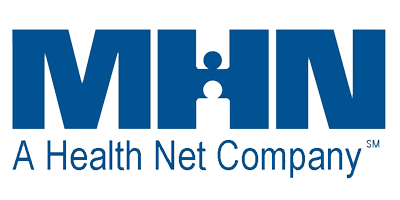If you’re new to this sort of therapy, there are probably many ABA terms you aren’t familiar with. To ensure you or your loved one gets the care they need, we’ve compiled the most common ABA therapy terms into a glossary to guarantee you can be part of all conversations regarding care.
If you have questions or want to start ABA therapy, please contact us! Spectrum Behavioral Therapies’ ABA services are available in Orange County, California.
A
ABA
ABA stands for Applied Behavior Analysis, a behavioral science and therapy treatment focused on teaching and improving various developmental skills.
A-B-C
A-B-C stands for “Antecedent, Behavior, Consequence.” It’s a behavior correction sequence. You will find what each term means within this glossary.
Antecedent
An antecedent is an environmental or stimulus change that may or may not cause targeted behavior.
Aversive Stimulus
An aversive stimulus is a trigger a person finds upsetting and could cause maladaptive behaviors.
Avoidance Contingency
Avoidance contingency is a strategy to prevent or delay a negative experience or stimulus—taking a person out of a bad situation and presenting consequences for maladaptive behavior.
B
Behavior Contracts
A behavior contract is a written agreement between an ABA therapist and a client that lays out the expected behavior or tasks that must be done to earn a reward.
Behavior Intervention Plan (BIP)
A BIP is a treatment plan created from a functional behavioral assessment that explains why maladaptive behaviors occur and how to address and change them.
Behavioral Technician (BT)
A behavioral technician is a paraprofessional who works with a BCBA. They often implement behavioral treatment plans and work with clients.
Behavior Treatment Plan
This treatment plan explains why a client has maladaptive behaviors and how the people around them should react to the behaviors. It also lays out how to encourage positive behavior.
Board Certified Behavior Analyst (BCBA)
A BCBA is a person who has a graduate degree in behavioral analysis. They take the lead in assessing and creating behavioral treatment plans for clients.
C
Chaining
Chaining, also known as behavior chaining, is a series of steps a person can take to complete a task or learn a new skill. There are two types of chaining:
- Backward chaining: An ABA therapist will start with the last step when instructing a client and go backward (5, 4, 3, 2, 1).
- Forward chaining: This method starts with the first step and works until reaching the last (1, 2, 3, 4, 5).
Center-Based ABA
ABA sessions held at a treatment center are center-based, but sessions can also be held at homes and schools.
D
Differential Reinforcement of Alternative Behavior (DRA)
DRA teaches alternative behaviors to maladaptive ones to achieve the same desire (asking for attention instead of screaming until someone reacts). The ABA therapist offers reinforcement when the client uses the alternative behavior.
Differential Reinforcement of High Rates (DRH)
DRH refers to giving reinforcement when the client shows desired behaviors at a pre-established rate to increase the use of the desired behavior. For example, having three good days at school gets the client a special dessert.
Differential Reinforcement of Incompatible Behavior (DRI)
DRI is when reinforcement is offered for positive behavior displayed by those in ABA therapy. The goal is to encourage the continued use of positive behaviors instead of maladaptive behaviors. DRI is a form of DRA.
Differential Reinforcement of Low Rates (DRL)
DRL concentrates on lowering the rate of a behavior (not necessarily a maladaptive one) from occurring. An example of this could be that the client eats too fast. While it’s okay if it happens once in a while, doing this every day increases the chance of choking. A reinforcement would be introduced with every meal the client eats slowly.
Differential Reinforcement of Other Behavior (DRO)
A DRO strategy provides reinforcement when a client doesn’t use a maladaptive behavior for a predetermined amount of time. The goal is that positive behaviors increase while maladaptive behaviors decrease.
DTT (Discrete Trial Training)
DTT is a way to break down complex behaviors or tasks into smaller, more achievable steps. It uses the A-B-C method to explain the process. Each “trial” is concentrated on a specific targeted behavior.
Discriminative Stimulus (SD)
A discriminative stimulus is a prompt connected to a reinforcement when a behavior or task is done. For example, “When I get dressed for the day, I get to eat my favorite breakfast.”
E
Early Intervention
In ABA, early intervention refers to therapy for newborns and toddlers. Due to small children’s neuroplasticity, they are believed to show the most significant results.
Extinction
Extinction is a strategy used in ABA to discourage previously reinforced negative behaviors. It involves removing the things that were previously encouraging the behavior.
Extinction Burst
In ABA, an extinction burst refers to the target behavior increasing or intensifying at the beginning of the extinction process.
F
Functional Behavior Assessment (FBA)
An FBA is an in-depth analysis of a person’s behavior. It’s made of three parts:
- Observational: The BCBA will watch the client in various environments to identify triggering stimuli and the behaviors that occur from them.
- Indirect observations: The BCBA will interview people around the client, such as teachers, parents, and siblings, to better understand who the client is.
- Functional analysis: Defining the cause of targeted behavior and potential solutions to implement and share with others.
FCT (Functional Communication Training)
FCT is when an ABA client is taught alternative or more appropriate ways to communicate their needs. Functional communication methods such as signing, vocalizations, or gestures might be encouraged.
I
Intervention
Intervention is a plan or strategy to address targeted behaviors. In ABA, intervention is usually used as another word for treatment or care.
Interresponse Time (IRT)
IRT is the time after a person finishes one task before starting another or shifting from one behavior to another. IRT measures the time between behaviors.
L
Latency
In ABA, latency is a delayed response to stimuli. How long it takes a client to respond to stimuli is a factor BCBAs may work on during ABA sessions.
M
Maladaptive Behavior
Maladaptive behavior is any negative behavior a person shows in response to triggering stimuli.
Manding
Manding is when someone voices their needs through talking, gesturing, or signing. Other terms for manding include asking, demanding, requesting, etc.
N
Natural Environment Teaching (NET)
NET is an ABA strategy that uses a person’s natural environment to teach developmental skills and behaviors. For children, it’s often done by learning at home.
Neuroplasticity
Neuroplasticity refers to the brain’s ability to change patterns and learn habits. As people age, their neuroplasticity “stiffens,” making it more difficult to unlearn patterns.
P
Pairing
Pairing is when a person, usually an ABA therapist or behavioral technician, connects with a client by associating themselves with positive reinforcement. For example, an ABA therapist could associate themselves with a child’s favorite toy.
Prompt
A prompt is a signal (hint) to encourage positive behavior or completion of tasks. There are different types of prompts: verbal, visual, gesture, model, and physical.
R
Registered Behavioral Technician (RBT)
An RBT is a professional who received the RBT certificate, meaning they completed a 40-hour course and passed the RBT exam.
Reinforcement
Reinforcement is offering something to encourage positive behavior. There are many types of reinforcement:
- Positive reinforcement: Rewarding positive behavior or task completion with something the client likes. It’s given only after the behavior/task is completed. Example: Getting to do their favorite activity after cleaning up their toys.
- Primary reinforcement: These are reinforcements that people already want, such as a favorite food or drink.
- Secondary reinforcement: Reinforcements that are tied to specific behaviors or tasks. Example: Getting to do their favorite activity after putting away their toys.
S
Stimuli
Stimuli or stimulus is an object(s), environment(s), or action(s) that causes a reaction (good or bad) in an individual.
Self-Soothing
Self-soothing is a habit that individuals use to calm themselves down. It can be vocal noises, body movements, or many other behaviors. Self-stimulatory behavior is one well-known type of self-soothing.
T
Tacting
Tacting is when someone sees, smells, tastes, or hears something and comments on it. It’s a skill that may be developed during ABA sessions so the client can better communicate their needs.
Tactile Defensiveness
A hypersensitivity to touch. This can cause maladaptive behaviors in people when they are touched by people or objects.
Target Behavior
Target behavior is an ABA term for all behaviors that need to change or develop. You will often hear maladaptive behaviors called targeted behaviors.
Task Analysis
Task analysis involves breaking down a task or skill into multiple steps for easier teaching and learning.









